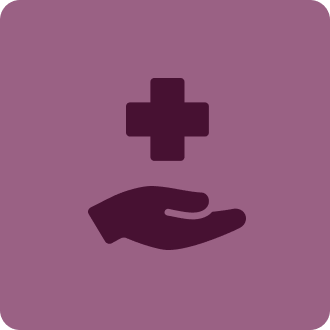Lung Cancer

Understanding Lung Cancer
Lung cancer is split into two main types: small cell lung cancer (SCLC) and non-small cell lung cancer (NSCLC). NSCLC is more common and has three further subtypes: adenocarcinoma (from mucus-producing cells), large-cell carcinoma, and squamous cell carcinoma (from airway or bronchi cells).
Signs of lung cancer can include a persistent cough, coughing up blood, breathlessness, chest or upper back pain, and frequent lung infections. Smoking, family history, lung conditions like COPD or lung fibrosis, and exposure to harmful things like asbestos can raise the risk. People at risk might have regular CT chest exams to look for lung nodules. But some can get lung cancer without these risks, often due to genetic changes.
Diagnosing and Staging Lung Cancer
Doctors use CT and PET scans, procedures such as a bronchoscopy to look inside the airways or mediastinoscopy to look between the lungs, and lab tests to diagnose lung cancer. They often do a biopsy, taking a small piece of tissue to confirm the diagnosis and look for specific genetic changes.
Doctors determine how advanced lung cancer is, or "stage" it. This depends on the tumor's size (T), if cancer is in the lymph nodes (N), and if it has spread elsewhere in the body (M). Stages range from 1 to 4, with 4 representing metastatic disease, or when the cancer has left the lung and traveled elsewhere in the body. Depending on the stage, they might also do MRI scans of the brain and spine. Your oncologist will order genetic testing on the tumor to guide treatment since certain therapies target specific mutations.

Treating Lung Cancer
Early Non-Small Cell Lung Cancer (NSCLC):
For early-stage NSCLC, treatment might include surgery or radiation alone without chemotherapy. Chemotherapy becomes more important in stage 2B and 3 cancers. If surgery isn't possible, options include chemoradiation followed by immunotherapy or "induction" therapy with chemotherapy with or without immunotherapy or chemoradiation followed by surgery. Chemotherapy often includes a "platinum" drug like cisplatin or carboplatin, combined with another drug based on the cancer type.
Small Cell Lung Cancer (SCLC):
SCLC is categorized as "limited stage" (confined to one side of the chest) or "extensive stage" (spread further). Limited stage SCLC might get chemoradiotherapy, a combination of radiation and chemotherapy.
Remember to discuss your specific diagnosis and treatment options with your doctor.

